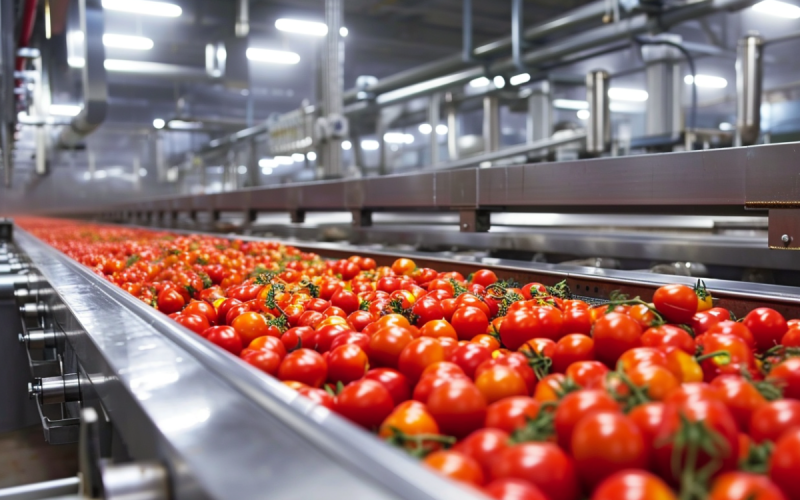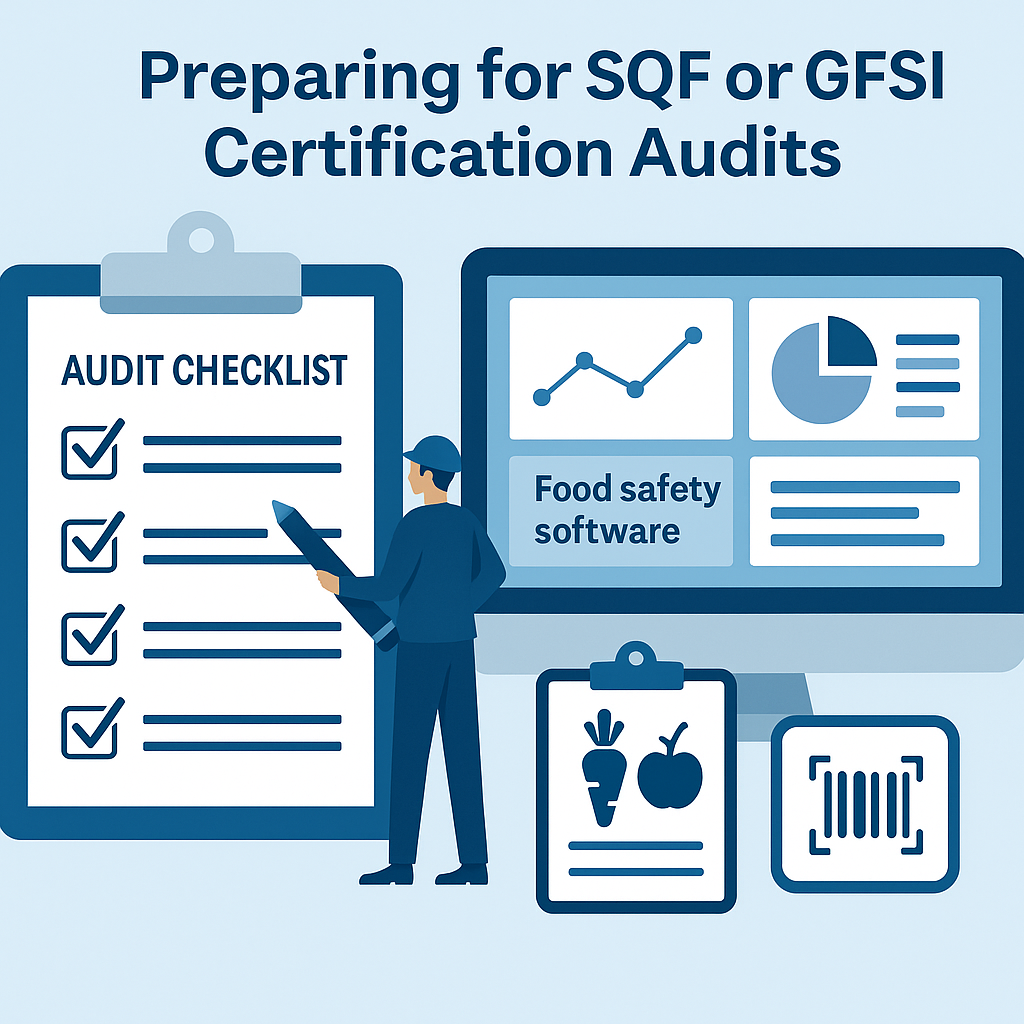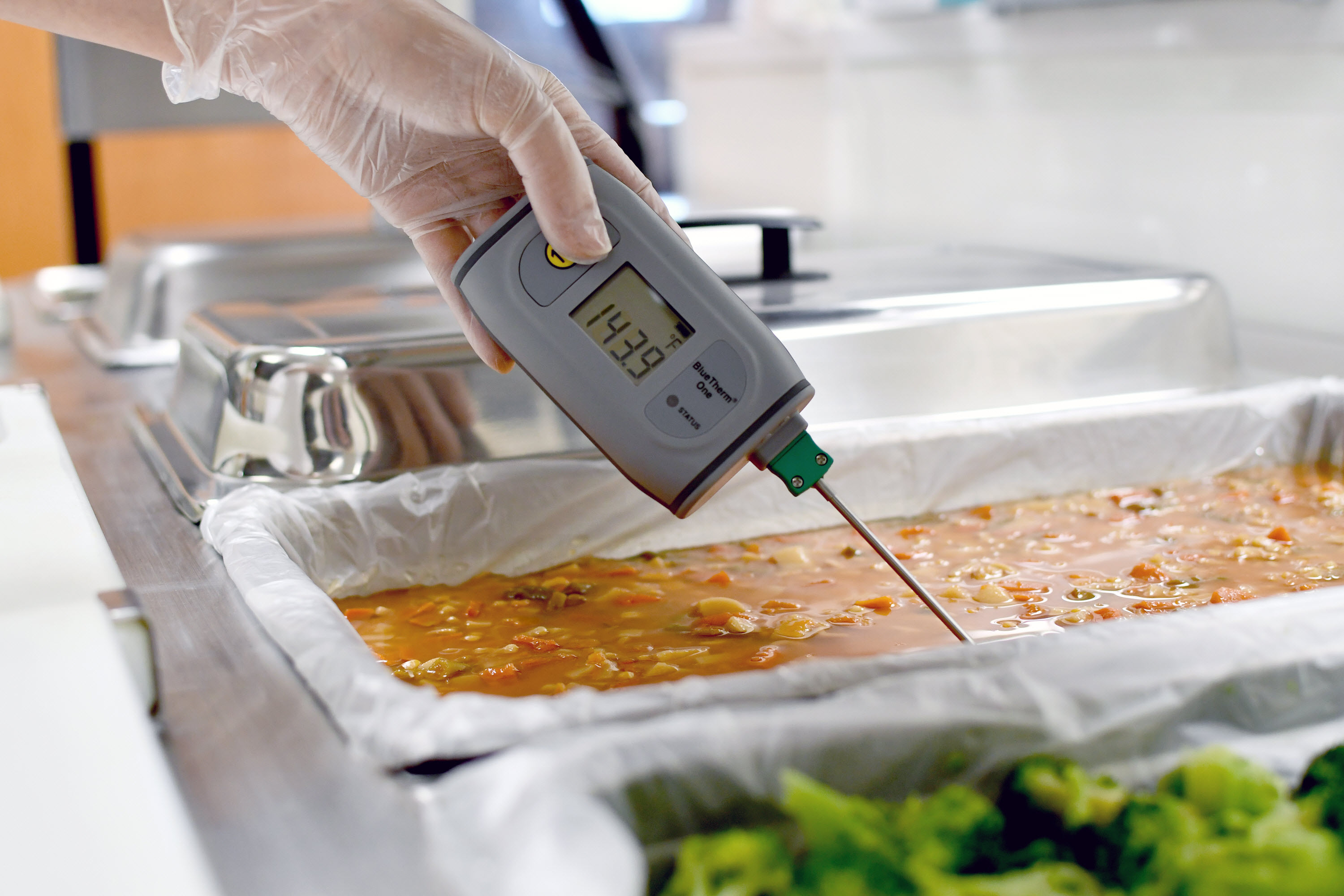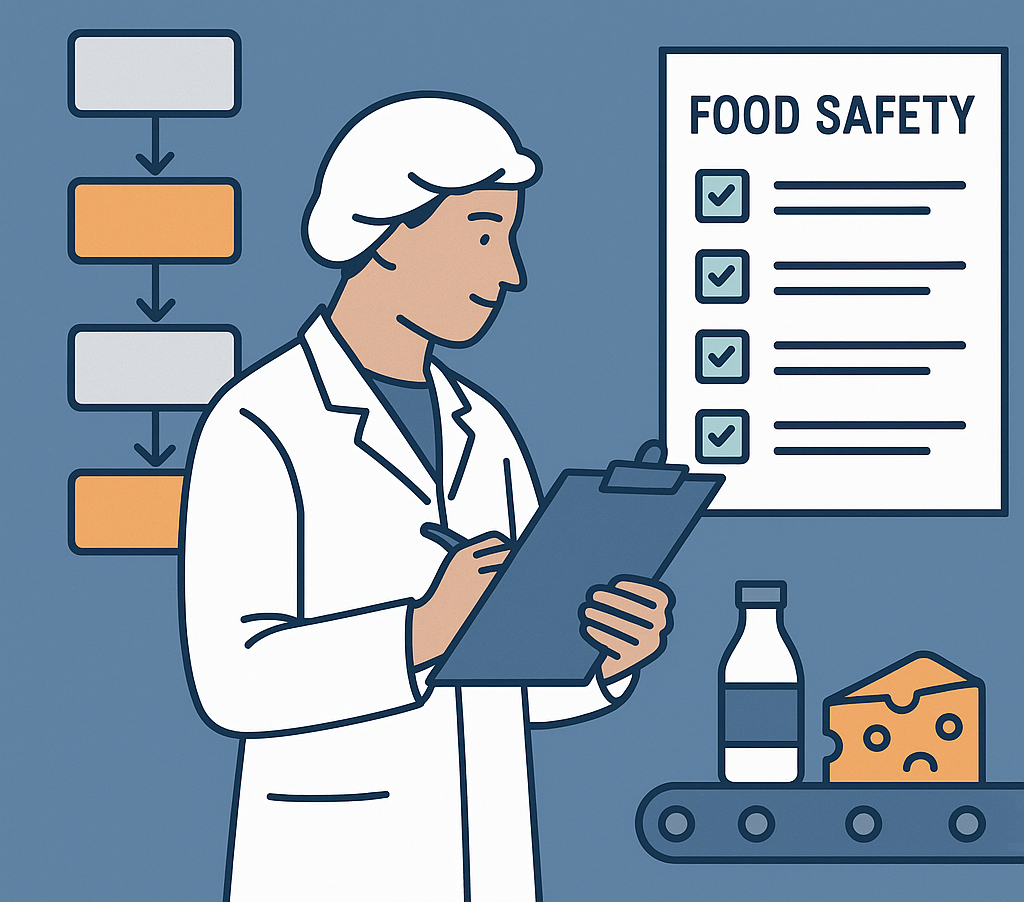As the food industry evolves, so do its challenges. With increasingly stringent regulations, growing consumer expectations, and heightened operational complexities, ensuring food safety is no longer just about ticking compliance boxes—it's about building resilient, transparent, and efficient systems.
For a long time, automation in food safety was seen as complex, costly, and only within reach for multinational food conglomerates. But today, that’s no longer true. Technology has advanced, and digital tools have become more affordable, intuitive, and scalable. This has made automation not only accessible to small and mid-sized businesses but also critical for their growth and competitiveness.
In this article, we explore why automation is becoming essential for food businesses of all sizes, how it works, and how to implement it step-by-step. You'll also see how food safety software is transforming day-to-day operations—from traceability to audits—while enhancing compliance, efficiency, and brand trust.
Why Food Safety Automation Is Now a Must-Have
1. Rising Regulatory Pressure
Agencies such as the CFIA, FDA, and international authorities continue to tighten their standards. From Preventive Control Plans (PCPs) to HACCP and traceability rules, the documentation and validation burden is growing. Manual systems are often too slow or inconsistent to keep up, leading to increased risk of non-compliance and fines.
2. Complex Operations and Supply Chains
Even smaller companies now juggle multiple suppliers, facilities, and distribution channels. Whether you're running a central kitchen, co-manufacturing for private labels, or exporting to international markets, keeping accurate records with paper or spreadsheets introduces human error and inefficiency.
3. Transparency and Consumer Demand
Today’s consumers are more educated and more concerned about what goes into their food. They expect transparency on ingredients, origin, allergens, and production practices. Companies that can’t deliver fast, accurate answers may lose trust and loyalty.
4. Labor and Time Constraints
Food companies are also grappling with workforce shortages—especially in QA and compliance departments. Automation helps optimize team output by eliminating repetitive tasks, freeing up time for proactive food safety strategy and oversight.
What Food Safety Automation Covers in Practice
When we talk about food safety automation, we're referring to the use of digital systems—often cloud-based platforms combined with sensors and mobile access—to streamline and secure essential safety and compliance tasks.
This typically includes:
-
Digital Recordkeeping: Logs for temperatures, sanitation, equipment maintenance, pest control, and other daily tasks are digitized and automatically time-stamped. No more chasing missing signatures or deciphering handwriting.
-
Real-Time Monitoring: Sensors placed in refrigerators, freezers, or cooking units automatically capture and transmit temperature data. If any reading goes out of spec, alerts are triggered instantly so corrective action can be taken in real time.
-
Deviation and Incident Tracking: When issues arise—such as a failed sanitation checklist or allergen control deviation—the system triggers alerts, assigns tasks, and creates a traceable corrective action record.
-
SOP and Training Management: Team members receive updated procedures and training via digital platforms. You can verify acknowledgment and track who has completed which modules, ensuring everyone stays aligned with current standards.
-
Traceability and Recall Readiness: Ingredients are traced from supplier to final product using lot numbers, dates, and automated workflows. In the event of a recall, you can generate a full traceability report in minutes, not days.
-
Audit Preparation: With all data centralized and digital, preparing for third-party audits or regulatory inspections becomes faster, easier, and less stressful. You can instantly produce documentation and compliance reports.
-
Analytics and Reporting: Dashboards provide insights into recurring non-conformances, identify risk trends, and allow managers to make data-driven decisions to improve food safety processes continuously.
All of this is made possible through modern food safety software that’s accessible via desktop or mobile devices—making automation practical even on the production floor.
Step-by-Step Guide to Implementing Food Safety Automation
Let’s walk through a practical roadmap to start automating your food safety systems—no matter the size of your operation.
Step 1: Identify Your Weakest Links
Start with a self-assessment. Ask:
-
Which tasks are taking the most time or producing the most errors?
-
Are my records up to date and consistently completed?
-
How long would it take to retrieve full traceability data in a recall?
-
How do I handle deviations or missed checks?
The answers will help you identify high-priority areas for automation—often things like temperature monitoring, cleaning logs, or supplier tracking.
Step 2: Choose the Right Food Safety Software
Not all digital tools are created equal. Choose a solution that fits your operational size and regulatory scope. Features to look for include:
-
Built-in HACCP and PCP frameworks
-
Mobile-friendly data entry
-
IoT sensor compatibility
-
Real-time dashboards
-
Audit export functionality
-
Integrated traceability features
-
Cloud access (no IT team needed)
🖥️ Ready to see a real example? Book a free demo here and see how NORMEX simplifies food safety management with automation designed specifically for food businesses.
Step 3: Start with One Core Process
Avoid overwhelming your team with a massive shift. Pick one high-impact process and automate it first.
Examples:
-
Install IoT sensors in cold storage and eliminate manual temperature checks.
-
Digitize sanitation and receiving checklists using a mobile app.
-
Convert your PCP/HACCP plan from a binder to a living digital document linked to day-to-day records.
Success in one area builds confidence and provides immediate ROI.
Step 4: Involve Your Team Early
Change management is key. Involve supervisors, QA leads, and frontline staff from the beginning:
-
Offer training sessions with hands-on practice.
-
Assign a team champion to answer questions.
-
Highlight how automation reduces double work and helps pass audits.
The more your team sees the benefits, the faster they’ll adopt the new system.
Step 5: Expand Gradually and Optimize
Once your first process is stabilized, gradually expand to:
-
Production lot traceability
-
Allergen control verification
-
Equipment maintenance scheduling
-
Staff training and SOP compliance
Review dashboards weekly. Use insights to fine-tune processes, reduce waste, and anticipate risks before they become problems.
Real-World Impact: From Manual Logs to Digital Confidence
Let’s consider a real-life example.
A Québec-based food processor with fewer than 30 employees was preparing for export to the U.S. They faced challenges with manual logs, inconsistent allergen controls, and poor traceability. They started using a digital food safety software focused on:
-
Live temperature tracking
-
Digital allergen checklists
-
Supplier lot integration into finished product codes
Results in 6 months:
-
Audit preparation time cut by 80%
-
Traceability reports generated in under 3 minutes
-
Zero non-conformities reported during their CFIA inspection
-
Improved collaboration across shifts with mobile dashboards
They didn’t need to overhaul their entire system overnight—just the right tools in the right areas.
Final Thoughts: Start Where You Are, Grow with Automation
Automation isn’t about having the latest technology—it’s about solving real-world challenges with smarter tools.
Whether you're producing baked goods, dairy, frozen meals, beverages, or plant-based proteins, automating parts of your food safety program will:
-
Strengthen compliance
-
Enhance audit readiness
-
Improve operational efficiency
-
Protect your brand and customers
-
Reduce risk and recall exposure
And most importantly—it saves time so your team can focus on growth, innovation, and quality.
If you're ready to explore how automation can transform your operations, we invite you to book a personalized demo here.
Let your food safety program work for you—not the other way around.







